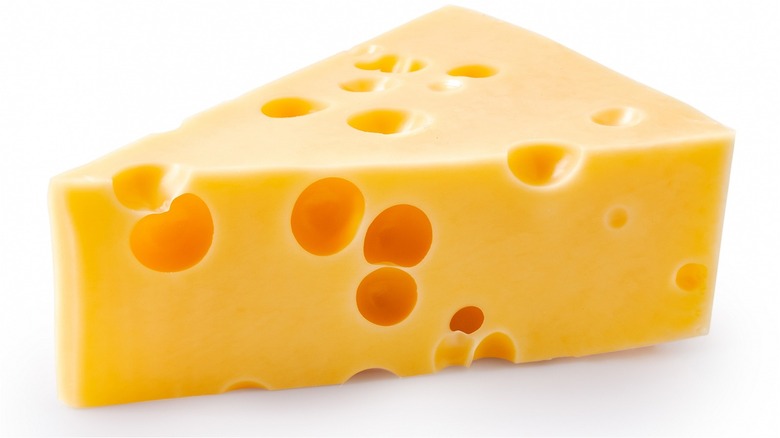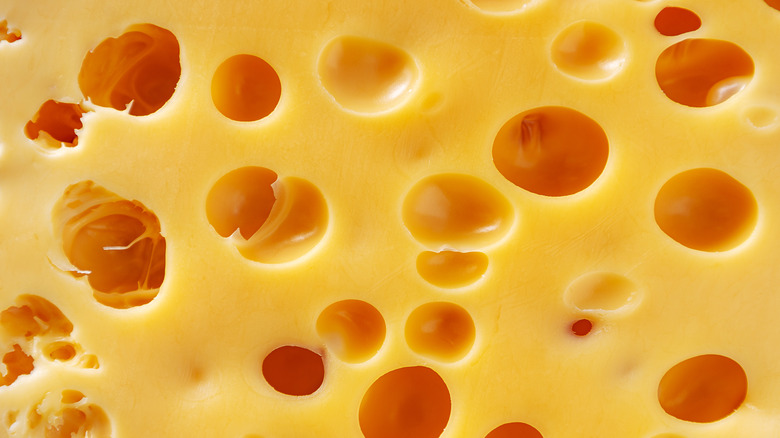Swiss Cheese's Trademark Holes Are Caused By Bacteria
Swiss cheese is without a doubt one of the most iconic cheeses on the planet. Its pale yellow hue, firm yet creamy texture, and nutty, mellow, slightly sweet flavor make it a favorite among turophiles everywhere. The versatile cheese can be enjoyed in an array of dishes, from sandwiches and burgers to pasta and salads to fondues and dips — or as a snack by itself.
Swiss cheese also offers a slew of health benefits. For one, it is an excellent source of calcium and protein and has a lower sodium content than many other kinds of cheese, according to Healthline. And, perhaps surprisingly to those who are lactose intolerant, Swiss cheese contains low levels of the enzyme commonly found in dairy products.
Swiss cheese has one unique aspect that makes it instantly recognizable: the holes scattered across its surface. This iconic feature has made Swiss cheese a global pop culture legend. In the mid-20th century cartoon "Tom and Jerry," Jerry Mouse is often shown munching on crumbs of Swiss cheese while dodging the violent wrath of Tom Cat. It's even the variety depicted by the cheese emoji.
So, how exactly do these illustrious gaps develop in Swiss cheese? This phenomenon is due to teeny-tiny living beings we know as bacteria.
The science of Swiss cheese
Yep, you read that right! Swiss cheese's cavity-ridden surface is caused by the bacterium Propionibacterium freundenreichii, as the National Library of Medicine explains. However, here's why this scientific marvel is not as alarming as it sounds.
To offer up a brief chemistry lesson, these unicellular microorganisms develop as Swiss cheese ripens, thereby producing the salts acetate and propionate and releasing the gas CO2. The result? Air bubbles! According to ScienceDirect, this bacterium is responsible not only for Swiss cheese's characteristic holes but also for its pleasant, widely-appealing flavor profile. By the way, the holes formed during the cheesemaking process are actually known as "eyes" to cheese experts.
As strange as all of this may sound, thou shall not worry about bacteria in Swiss cheese. In fact, a number of foods we love contain wholesome, good-for-your-gut, probiotic bacteria, including yogurt, sourdough bread, kimchi, and sauerkraut (via WebMD). Next time you take a bite of Swiss cheese or melt it onto your burger, take a moment to appreciate the fascinating science behind its most famous oddity.
See? Learning about cheese can be quite eye-opening!

